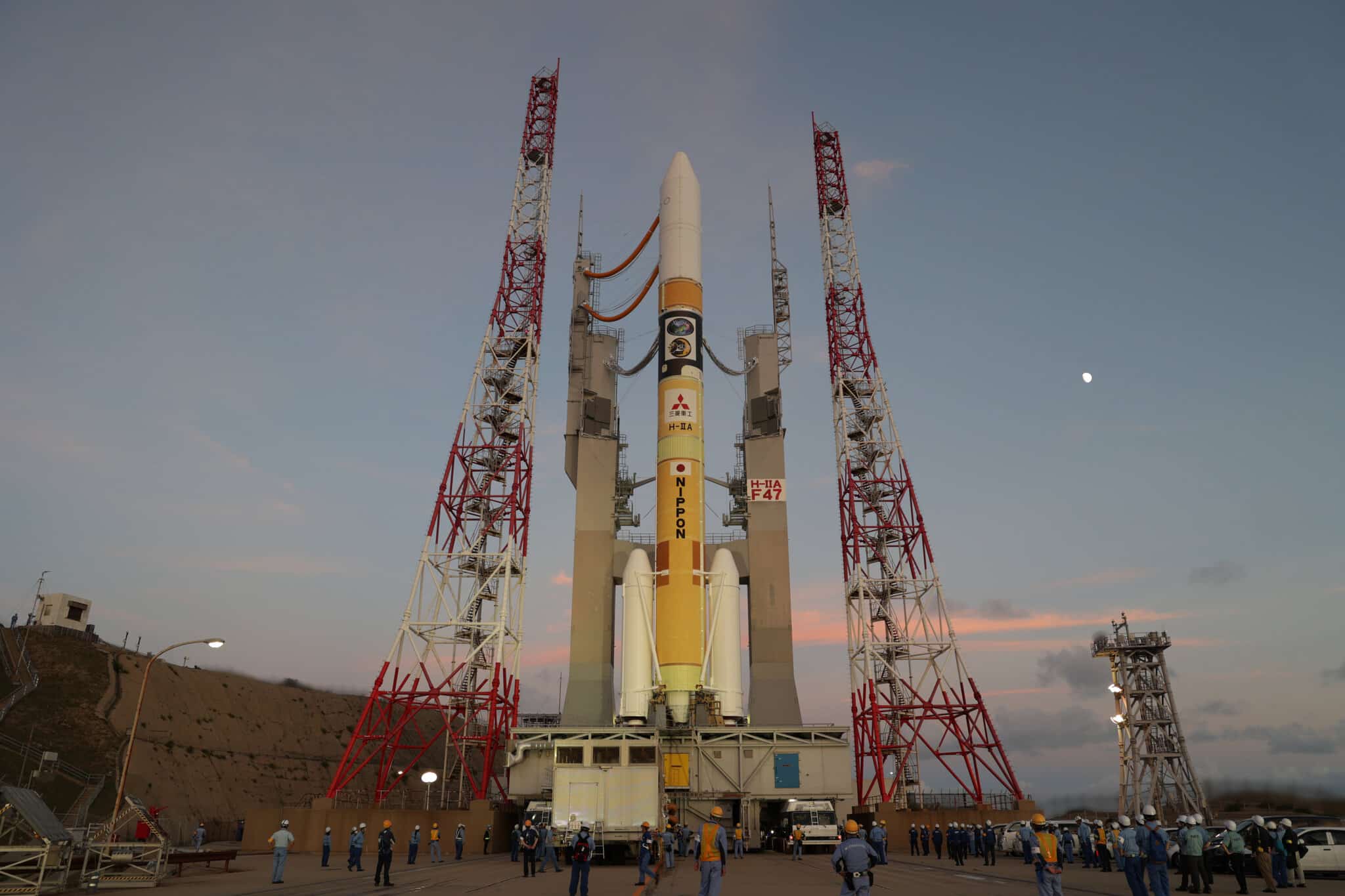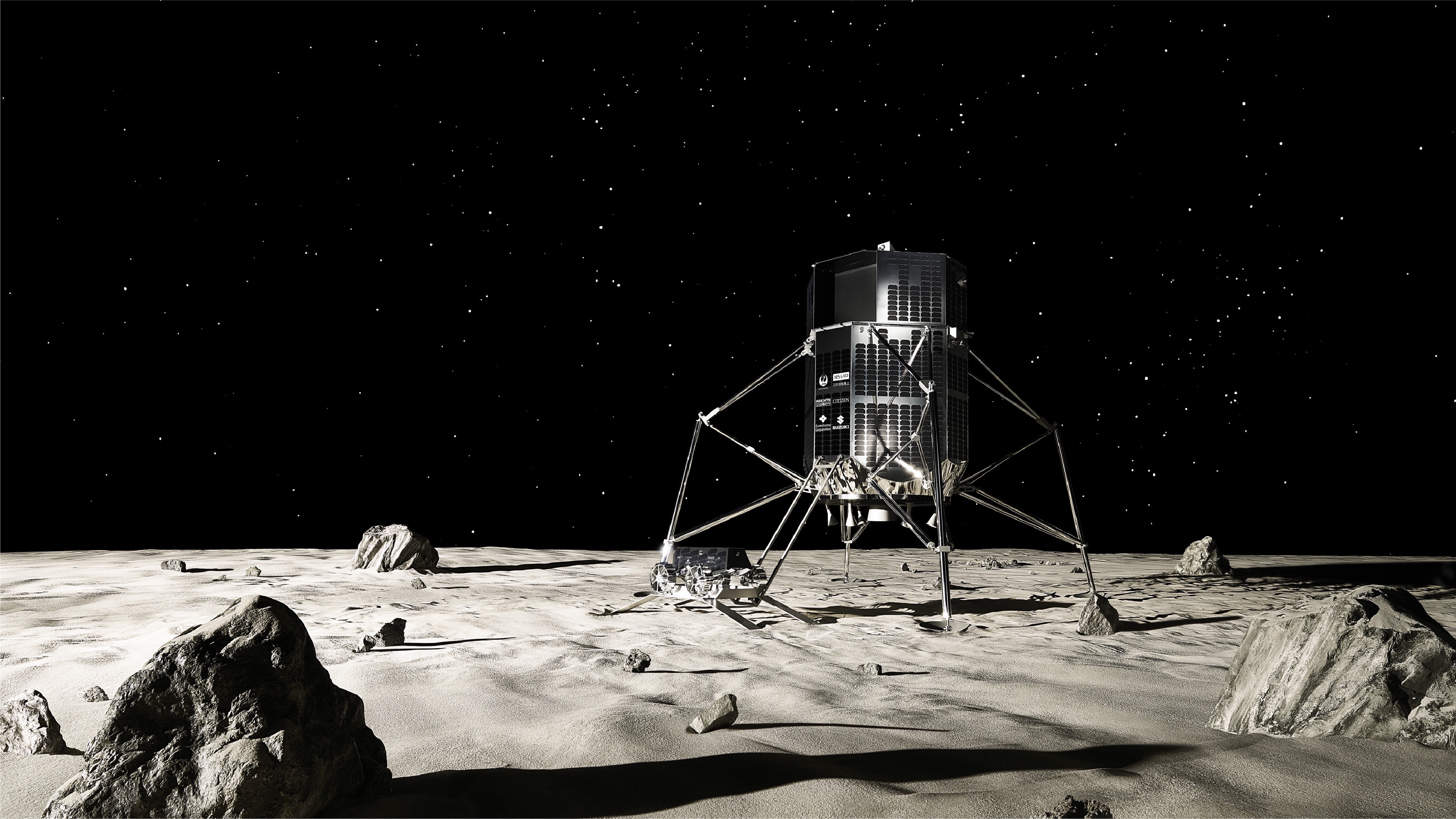Science
Japan Became The Fifth Country To Reach The Moon After Its Spacecraft Landed On The Lunar Surface

According to officials, TOKYO— Japan became the fifth country in history to visit the moon when its spacecraft landed on the lunar surface early Saturday. However, a power supply issue could jeopardise the mission.
Officials also said they needed more time to determine whether the spacecraft, which was not carrying people, achieved a precise landing – one of the mission’s aims.
Hitoshi Kuninaka, director of the Institute of Space and Astronautical Science, believes that rovers were launched, and data was transmitted back to Earth from the Smart Lander for Investigating Moon or SLIM.
However, he stated that SLIM’s solar battery was not producing electricity and that the spacecraft’s battery life would only be a few more hours. He stated that the aim now was for the craft to collect as much moon data as possible on the remaining battery.
Japan joined the United States, the Soviet Union, China, and India in visiting the moon.
Japan Became The Fifth Country To Reach The Moon After Its Spacecraft Landed On The Lunar Surface
Kuninaka argues that Japan’s space programme has achieved “minimum” success.
SLIM arrived on the moon around 12:20 a.m. Tokyo time on Saturday (1520 GMT on Friday).
There was a nervous wait for word when the Japan Space Agency’s mission control initially stated that SLIM was on the lunar surface but was still “checking its status.” This information was provided nearly two hours later during a news conference.
Space officials must confirm that SLIM achieved a precise touchdown to be regarded as successful. While additional time is needed, Kuninaka believes it was most likely achieved based on his observations of the spacecraft’s movement till landing.
SLIM, which was attempting to hit a very small target, is a small spacecraft around the size of a passenger vehicle. It used “pinpoint landing” technology, which offers significantly more control than previous lunar landings.
Most prior probes employed landing zones around 10 kilometres (six miles) wide, but SLIM aimed at a target of only 100 metres (330 feet).
Japan Aerospace Exploration Agency, or JAXA, worked on precision technologies for two decades before launching the project.
Japan Became The Fifth Country To Reach The Moon After Its Spacecraft Landed On The Lunar Surface
As the spacecraft descended, JAXA’s mission control reported that everything was going as anticipated and that SLIM was on the lunar surface. However, there needed to be a mention of whether the landing was successful. Mission control repeatedly stated that it was “checking its status” and that more information would be released during the news conference.
SLIM, also known as “the Moon Sniper,” began its drop at midnight on Saturday and was down to around 10 kilometres (six miles) over the lunar surface within 15 minutes, according to the space agency, JAXA.
The lander was in vertical fall mode at five kilometres (three miles) height, and SLIM was meant to conduct a parallel movement to identify a safe landing location about 50 metres (165 feet) above the surface, according to JAXA.
The mission’s primary purpose is to test new landing technology that will enable moon expeditions to land “where we want to, rather than where it is easy to land,” according to JAXA. Using a unique camera, the spacecraft is meant to look for clues concerning the moon’s formation, including mineral analysis.
The SLIM, which was equipped with a pad to cushion the impact, was attempting to land near the Shioli crater, which is surrounded by volcanic rock.
The carefully watched mission came just ten days after a private American company’s moon mission failed when the spacecraft experienced a fuel leak hours after launch.
SLIM was launched on a Mitsubishi Heavy H2A rocket in September. It initially orbited Earth before entering the lunar circle on December 25.
Following several setbacks, Japan aims to reestablish faith in its space technology. A Japanese-designed spacecraft crashed during a lunar landing attempt in April, while a new flagship rocket failed to launch in March.
JAXA has a track record of challenging landings. Its Hayabusa2 spacecraft, launched in 2014, landed twice on the 900-meter-long (3,000-foot-long) asteroid Ryugu to collect samples, which were returned to Earth.
Japan Became The Fifth Country To Reach The Moon After Its Spacecraft Landed On The Lunar Surface
Experts argue that a successful SLIM pinpoint landing, particularly on the moon, would boost Japan’s prominence in the global space technology race.
Takeshi Tsuchiya, an aeronautics professor at the University of Tokyo’s Graduate School of Engineering, stated that confirming the accuracy of landing on a specific spot is critical for future moon exploration.
“It is necessary to show the world that Japan has the appropriate technology to be able to properly assert Japan’s position in lunar development,” he said. He stated that the moon is significant for resource exploitation and may be utilised as a base to travel to planets like Mars.
SLIM is carrying two small autonomous probes, the lunar excursion vehicles LEV-1 and LEV-2, which will be launched shortly before landing.
LEV-1, outfitted with an antenna and a camera, is charged with filming SLIM’s landing. In collaboration with Sony, Tymaker Tomy, and Doshisha University, JAXA created LEV-2, a ball-shaped rover with two cameras.
JAXA will live stream the landing, and space enthusiasts will gather at the agency’s Sagamihara facility southwest of Tokyo to watch the momentous event on a large screen.
SOURCE – (AP)
Science
A Spacecraft Is On Its Way To A Harmless Asteroid Slammed By NASA In A Previous Save-The-Earth Test

CAPE CANAVERAL, Florida – A spacecraft launched Monday to probe the site of a cosmic accident.
The European Space Agency’s Hera spacecraft launched on a two-year trip to the little, harmless asteroid slammed by NASA two years ago as a practice run for the day when a murderous space rock threatens Earth. It’s the second phase of a planetary defense experiment that could one day save the globe.
SpaceX’s Falcon rocket vanished with Hera into the late morning clouds. An hour later, cheering erupted in the control center in Germany as the spacecraft split from the rocket’s upper stage and returned home. “It’s an amazing day,” the space agency’s director general, Josef Aschbacher, said later.
The 2022 crash of NASA’s Dart spacecraft reduced Dimorphos’ orbit around its larger companion, indicating that if a harmful rock was heading our way, it might be pushed off course with adequate warning.
nasa
A Spacecraft Is On Its Way To A Harmless Asteroid Slammed By NASA In A Previous Save-The-Earth Test
Scientists are eager to analyze the aftermath of the impact up close to determine how effective Dart was and what improvements may be required to protect Earth in the future.
“The more detail we can glean the better as it may be important for planning a future deflection mission should one be needed,” University of Maryland astronomer Derek Richardson stated before launch.
Researchers want to know if Dart (short for Double Asteroid Redirection Test) created a crater or changed the 500-foot (150-meter) asteroid more dramatically. It seemed to be a flying saucer before Dart’s blow and may now resemble a kidney bean, according to Richardson, who participated in the Dart mission and is assisting Hera.
Dart’s wallop sent rubble and boulders hurtling off Dimorphos, adding to the impact’s momentum. For months, the debris track extended thousands of miles (almost 10,000 kilometers) into space.
According to flight director Ignacio Tanco, some rocks and debris may still be hovering about the asteroid, posing a threat to Hera.
A Spacecraft Is On Its Way To A Harmless Asteroid Slammed By NASA In A Previous Save-The-Earth Test
“We don’t really know very well the environment in which we are going to operate,” Tanco informed me. “But that’s the whole point of the mission is to go there and find out.”
European authorities refer to the $400 million (363 million euros) effort as a “crash scene investigation.”
“Hera is going back to the crime scene and getting all the scientific and technical information,” said project manager Ian Carnelli.
Carrying a dozen science instruments, the compact car-sized Hera must swing past Mars in 2025 for a gravitational boost before landing at Dimorphos by the end of 2026. It’s a moonlet of Didymos, the Greek word for twin, a five-times larger asteroid that spins quickly. At that point, the asteroids will be 120 million miles (195 million kilometers) from Earth.
Hera will attempt to enter orbit around the rocky duo, progressively reducing flyby distances from 18 miles (30 kilometers) to a half-mile (1 kilometer). The spacecraft will examine the moonlet for at least six months to determine its mass, shape, composition, and orbit around Didymos.
Before the crash, Dimorphos circled its larger partner from three-quarters of a mile (1,189 meters) away. Scientists believe the orbit has become tighter and more oval-shaped, and that the moonlet may be tumbling.
Two shoebox-sized Cubesats will launch from Hera for even closer drone-like examinations, with one employing radar to peek beneath the moonlet’s boulder-strewn surface. Scientists believe Dimorphos was produced from particles shed by Didymos. The radar measurements should assist in determining whether Didymos is the small moon’s parent.
A Spacecraft Is On Its Way To A Harmless Asteroid Slammed By NASA In A Previous Save-The-Earth Test
After their survey, the CubeSats will attempt to land on the moonlet. If the moonlet tumbles, the situation will become more complicated. Hera may potentially conclude its mission with a perilous touchdown but on the bigger Didymos.
Asteroids, which are remnants of the solar system’s origin 4.6 billion years ago, circle the sun principally between Mars and Jupiter in what is known as the main asteroid belt, where millions of them live. When they fall from the belt and land in our area, they become near-Earth objects.
NASA now has around 36,000 near-Earth objects, the majority of which are asteroids, although there are also some comets. More than 2,400 of them are deemed potentially dangerous to the Earth.
SOURCE | AP
Science
A Rare Comet Brightens The Night Skies In October

NEW YORK — Prepare to spot a rare and dazzling comet.
The space rock is hurling toward Earth from the far reaches of the solar system and will make its closest approach on Saturday. It should be visible through the end of October, assuming clear skies.
A Rare Comet Brightens The Night Skies In October
Comet Tsuchinshan-Atlas should be visible to the naked eye, but binoculars and telescopes will provide a clearer view.
“It’ll be this fuzzy circle with a long tail stretching away from it,” explained Sally Brummel, planetarium manager at the Bell Museum in Minnesota.
What is a comet?
They are frozen remains from billions of years ago when the solar system was formed. They heat up as they swing toward the sun, revealing their distinctive streaming tails.
In 2023, a green one that had last visited Earth 50,000 years ago flew past again. Other significant flybys were Neowise in 2020 and Hale-Bopp and Hyakutake in the mid to late 1990s.
Where did Tsuchinshan-Atlas come from?
Also known as C/2023 A3, was found last year and named after the observatories in China and South Africa that spotted it.
It originated in the Oort Cloud, which extends far beyond Pluto. After making its closest approach to Earth at 44 million miles (71 million kilometers), it will not return for another 80,000 years, provided it survives the journey.
A Rare Comet Brightens The Night Skies In October
Every year, several comets are detected, but many of them burn up near the sun or are too far away to be observed without special equipment, according to Larry Denneau, a key researcher with the Atlas telescope that helped discover it.
How to View
Those seeking to see Tsuchinshan-Atlas should go outside about an hour after sunset on a clear night and look to the west.
The comet should be visible from both the Northern and Southern Hemispheres.
SOURCE | AP
Science
NASA Switches Off Instrument On Voyager 2 Spacecraft To Save Power

NEW YORK — To save power, NASA turned off another scientific equipment on its long-running Voyager 2 spacecraft.
NASA Switches Off Instrument On the Spacecraft To Save Power
The space agency announced on Tuesday that 2’s plasma science instrument, meant to study the movement of charged atoms, was turned off in late September to allow the spacecraft to continue exploring for as long as possible, which is estimated to be into the 2030s.
NASA turned off a suite of instruments on Voyager 2 and its twin, Voyager 1, after exploring the gas giant planets in the 1980s. Both are currently in interstellar space or the region between stars. The plasma instrument on Voyager 1 stopped working years ago and was finally shut off in 2007.
The remaining four instruments on 2 will continue to collect data on magnetic fields and particles. Its mission is to investigate the regions of space beyond the sun’s protective sphere.
NASA Switches Off Instrument On Voyager 2 Spacecraft To Save Power
It launched in 1977, is the only spacecraft to have visited Uranus and Neptune. It is now more than 12 billion miles (19.31 billion kilometers) from Earth. 1 is more than 15 billion miles (24.14 billion kilometers) beyond Earth.
SOURCE | AP
-
News3 weeks ago
The Biden Administration can go Ahead With Student Loan Forgiveness, Says a Federal Judge.
-
News3 weeks ago
Tesla Recalls 27,000 Cybertrucks Due To A Rearview Camera Issue
-
World3 weeks ago
Uber Hires Yandex Spinoff Ride-Hail and Autonomous Delivery With Avride
-
Tech3 weeks ago
Accenture and NVIDIA Collaborate to Enhance AI Implementation.
-
Tech3 weeks ago
Meta has started the Facebook Content Monetization Program.
-
Election News3 weeks ago
Chief Operating Officer Of Truth Social’s Parent Company Resigns











































